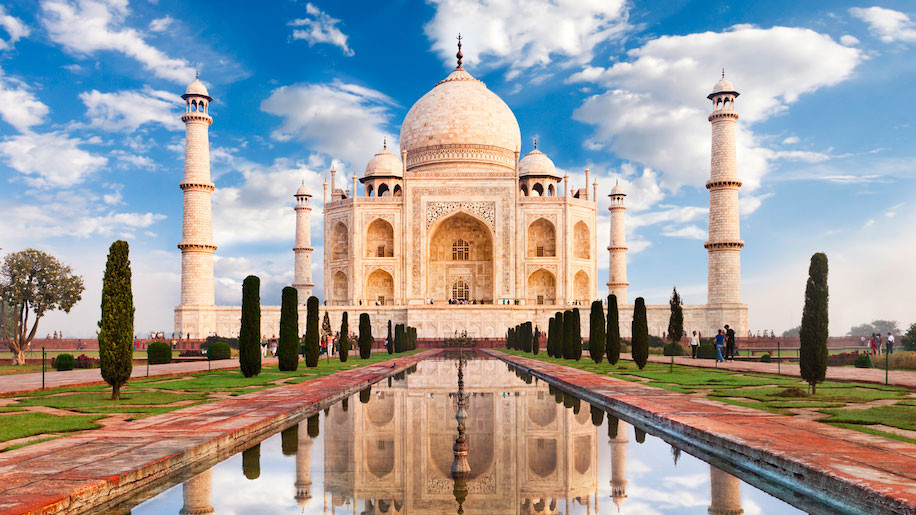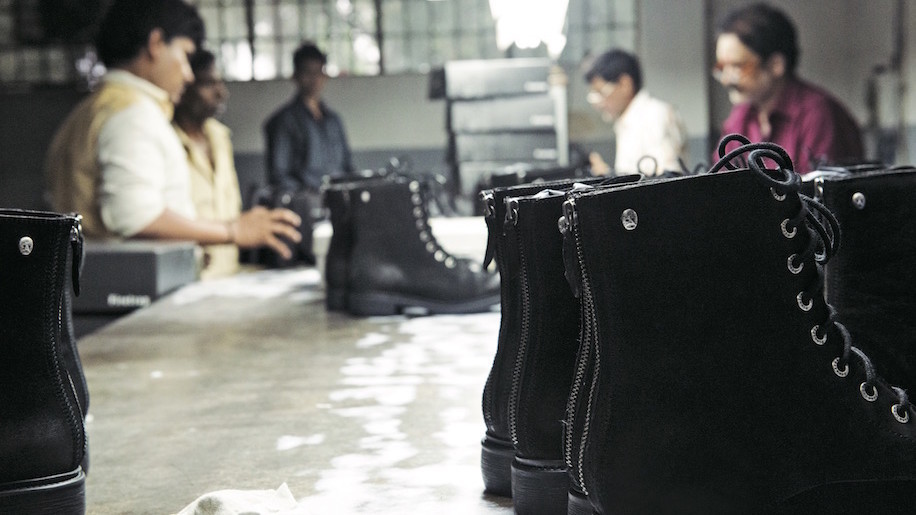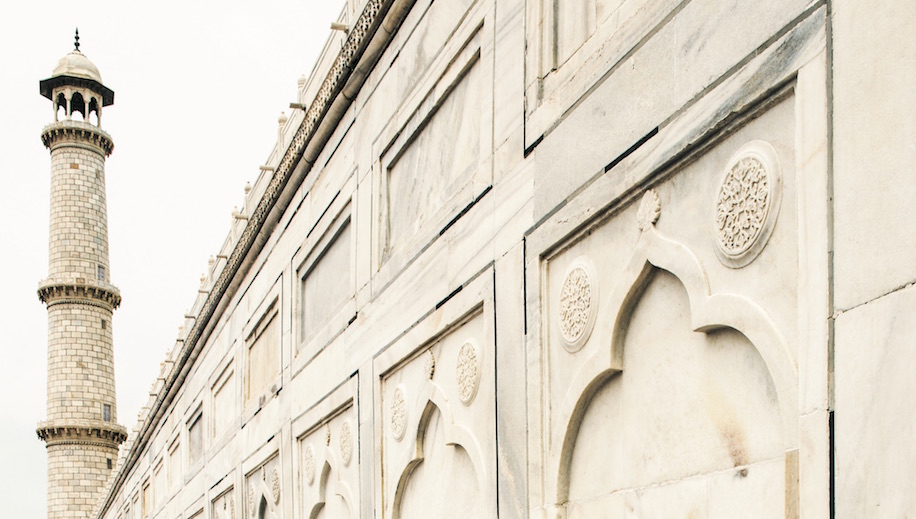
It was my second trip to this part of India.
On my first visit to Uttar Pradesh last March, I explored its capital Lucknow and delved into its handicrafts that date back to the Awadhi empire of the 18th century and still drive its economy. It was no surprise that Agra bears a striking resemblance to Lucknow in many ways. For one: the feel. Driving into the city from the Agra Cantonment railway station, denizens were spotted enjoying local delicacies that intrigue culinary enthusiasts from the world over. Agra, like Lucknow, prides itself with ancient monuments that were architectured by the royalty of its time. I kept searching for signboards that led me to the Taj Mahal, as a visit to this World Heritage Site had been on my bucket-list since I can remember. They surely weren’t difficult to spot.
The second: its relationship with art. Agra’s economy too is driven by handicrafts, that date back to its eminent Mughal empire and are strongly rooted in the realm of its antiquity. Products from traditional cottage industries line the city’s popular locations. Some are even synonymous with Agra; for instance the city is known for its marble creations, the same stone that was used to build one of India’s finest monuments — the Taj Mahal, built by Mughal emperor Shah Jahan, to commemorate his wife — Mumtaz Mahal.
The influence of art and culture by the Mughal empire continued from the time of Shah Jahan’s grandfather, Akbar, who brought in carpet weavers from Persia to Agra in the 13th century. The art of carpet-weaving nurtured in the country, as Indian artisans imbibed the skill. The once recreation of the king, continued to develop and thrive, and today contributes significantly to the economy of the city. As per the ministry of commerce, India accounts for 35 per cent of the worldwide export of handmade carpets. The carpet exports from India stood at US$1,173.4 million between April 2014 and February 2015. The figures are expected to grow 9 per cent this year. The state of Uttar Pradesh, with Agra steering the way, ranks number one in its contribution, ahead of Rajasthan, Haryana, Gujarat and Jammu & Kashmir.

Carpets from Agra are known to ornament the likes of the Whitehouse in the United States of America and the homes of eminent bigwigs of the world. “The New York Yacht Club and the residences of Nicholas Cage and Bill Clinton too have been beautified by our carpets,” says Anmol Agarwal as he guided me through Black Mountain Looms’ factory in an area called Taj Ganj. The company is a joint venture with New York-based Michaelian & Kohlberg, a partnership that took place in 1996. “We export to Turkey, China and the United States. It’s our design and expertise that differentiates us from the rest of the market. The carpets we manufacture appeal to the design sensibility of the international customer and can’t be found anywhere else in Agra.”
What intrigued me was how different and non-traditional the carpets being manufactured at the factory were. Agarwal explains, “While most of the carpets in the Agra market carry traditional artwork, we work with noted, international carpet designer Jan Kath, whose designs are known for their unconventionality. This helps us connect with our global market, where we primarily operate.”
It isn’t only the carpets of Agra that have managed to reach international bazaars. Another industry that flourishes today and dates back to the Mughal empire is the city’s footwear business. Back in the 16th century, warriors fought battles without any footwear. Emperor Akbar summoned shoe-makers across the globe to create leather boots that his soldiers wore on the battlefield. The leather industry began to flourish and the material was also used to create shields of warfare. Until today, Agra’s leather shoes are internationally recognised for their quality and sturdiness. Gaurav Gujral, CEO of Basant Overseas, leading footwear manufacturer of Agra explains how his grandfather brought in his expertise from Pakistan, when the family moved to India after the Partition. “Today, we manufacture around 2,000 shoes per day, and work with our agents in the United States, the United Kingdom, Italy, France, Australia and New Zealand. Even with such high production figures, 70 per cent of the processes involve manual labour, which brings in attention to detail and a stringent quality control at every stage. The company works with the likes of Hush Puppies, United Colors of Benetton and El Corte Inglés and imports their leather from South India.

As I toured the factory, I observed how their products were treated at different stations and checked multiple times. “Each shoe has 60 components and goes through the hands of 1,000 workers, before it is ready for export,” Gujral adds. As he rightly pointed out, the scale of the factory was overwhelming, and their structured systems reflected their quest to perfect every product that left the factory. While it’s well-known that Chinese factories are the preferred manufacturing sites for retail companies worldwide, a lot of production is shifting to India because of lower costs and better economies of scale. “India prides itself with its art and tradition and this emulates in our businesses too. Our most valuable possessions are our artisans and people, that endeavour to create the best product with their skill and dedication. Over three generations of artisans have worked with us and we have inculcated principles in our business that significantly add value to our offering. I believe it is that personal touch that makes us stand out in a relatively busy market.”
It’s fascinating to learn that an industry that traces back to the Mughal era today contributes significantly to the city’s economy, accounting to 65 per cent of domestic consumption and 28 per cent of the footwear exports from India. About 25 per cent of the city’s population is indirectly or directly associated with this industry. While around 60 units are entirely mechanised and use state-of-the-art machinery to manufacture, 150 units are semi-mechanised. Totally, the units produce a whopping two lakh shoes per day and export to distinguished international brands like Florsheim, Nike, Reebok, Ecco, St Michaels and Hasley. Last year, the government slashed excise duties from 12 per cent to 6 per cent, on leather shoes priced at ₹1,000 and above. This will further encourage smaller facilities to manufacture more and better products.
Agra has been the face of India, and this is accredited to the Taj Mahal, that proudly stands as an icon of the country’s heritage. Along with its footwear and handicrafts industries, it wouldn’t be fair to overlook how the city has duly contributed to the Indian economy by means of its tourism. The government has made efforts to step this up by developing luxury offerings that entice international travellers who aren’t too comfortable visiting the city like a local. For example, The Maharajas’ Express, a luxe train owned and operated by Indian Railway Catering and Tourism Corporation halts at Agra for a few days. The Uttar Pradesh tourism time and again organises festivals and fairs to increase the inflow of foreign tourists. The Taj Balloon Festival, for instance, was hosted by the government in association with Sky Waltz in November 2014. The fest introduced the safe adventure-sport of hot-air ballooning to Uttar Pradesh.

WHAT TO SEE
Getting into Agra is now easier than ever. I took the Taj Express, that connects Agra to Greater Noida and Delhi through a controlled access expressway. This is India’s longest six-lane stretch at 165km. Just as we, Mumbaikars travel to Pune on the weekends for a quick getaway, the preferred destination of the denizens of the Indian capital is Agra, and it’s understandable why. The city is an undisputed combination of art, architecture and relaxation. With some fascinating properties (read about them in the where to stay section), it’s an easy escape for north Indians looking to break out of the bustle of city life.
Agra is the city of love. Quite ironic since Mumtaz Mahal, the “chosen one of the palace” was emperor Shah Jahan’s fourth wife (he married seven times). Never the less, he chose to build this colossal monument in her memory after her bereavement. “It is a myth that the emperor chopped off the hands of the labourers,” says Ved Prakash Gautam, a personnel from the ministry or tourism and culture, as he de-mystified the Taj Mahal on our tour. “While back in 17th century, most of the Mughal architecture was built using red sandstone, this monument was created using white inlaid marble and semi-precious stones. The translucent white marble was imported from Makrana, Rajasthan, the jasper from Punjab, and the jade from China. Shah Jahan was immensely fond of architecture and wanted to express his love for his deceased wife by creating a tomb that was nothing less than a spectacle. He employed 20,000 labourers that worked for a period of 20 years to build the structure. Keep in mind, machines didn’t exist during the period, and all construction was done by hand.” he adds.
The bazaar outside the Taj Mahal, known as Taj Ganj is ideal if a bit of street-shopping is on your agenda. Take home marble souvenirs or a picture-frame embedded with semi-precious stones, to place that quintessential picture you clicked at the Taj. The area is also known for its carpets and footwear collections, that are manufactured by small-scale units of the city.
While the iconic monument symbolises Agra, the city is also home to one of the finest forts from the Mughal era — the Agra Fort. Most of the architecture of that time was built using red sand-stone (the Taj Mahal being the exception). The 98-acre Agra Fort can be viewed alongside the Taj from Mehtab Bagh, from where you can catch a spectacular panorama of the two architectural marvels.
If you want to indulge in some authentic Mughlai cuisine, head to Peshawri at the ITC Mughal. Don’t miss their dal Bukhara, that’s simmered overnight to give it its signature taste.
There’s also a lovely cafe called Sheroes Hangout in Taj Ganj, that’s run by victims of acid-attacks. Quite a liberated space in a male-dominated city like Agra, that also serves as a readers’ cafe, a community radio hub. The cafe also holds exhibitions and activism workshops often.
WHERE TO STAY
ITC Mughal
The sprawling property (35 acres) is about 10km from the airport, 6km from the railway station and 3km from the Taj Mahal, making it quite centrally located. The Mughal rooms, Royal Mughal rooms, Mughal Chambers, EVA rooms (for single lady travellers), Mughal suites, Royal Mughal suites, Presidential suites — named Tansen and Raja Mansingh suites and the Grand Presidential suites namely Mumtaz, Nur Jahan, Zeenat, Nusrat Begum and Farzana are the room categories. Its award-winning Kaya Kalp spa, spread across 9,197 sqm, is Asia’s largest spa, and a haven for Ayurvedic and ritualistic treatments. ITC Hotels are known for their signature Indian restaurant — Peshawri, and this extends to their Agra property as well.

Oberoi Amarvillas
Located at only 600 metres from the Taj, the Oberoi Amarvillas is an unparalleled property. The hotel is known for high profile corporate events and weddings, and of course its iconic location. Its Mughal inspired decor exudes magnificence and room categories include Premier rooms, Deluxe suites, Luxury suites and Kohinoor suites. Bellevue (international cuisine) and Esphahan (Indian cuisine) are the restaurants at the hotel, while its bar is the only one in the world to offer an undisturbed view of the Taj Mahal. The Oberoi Amarvillas also houses a spa, an outdoor swimming pool, terraced lawns, fountains and reflection pools, that add to the grandeur of this luxe property.

Wyndham Grand
A part of Shekhar Resorts Ltd, Wyndham Grand is built across 18 acres, and is lined with terraced lawns and fountains inspired by the aesthetics of Mughal architecture. Its restaurants — The Orient Café, Jharokha, Pakhtoon, Zaiqa serve authentic Mughal cuisine, while Mharo Gaon, with its Rajasthan themed ambience serves regional cuisine from the northern state. The room categories are Superior rooms, Premier rooms, Executive rooms, Deluxe rooms and Deluxe suites. The leisure amenities at the Wyndham Grand include an outdoor swimming pool, sauna, spa-bath and a gym. A distant view of the Taj Mahal can be observed from the roof of the hotel.













